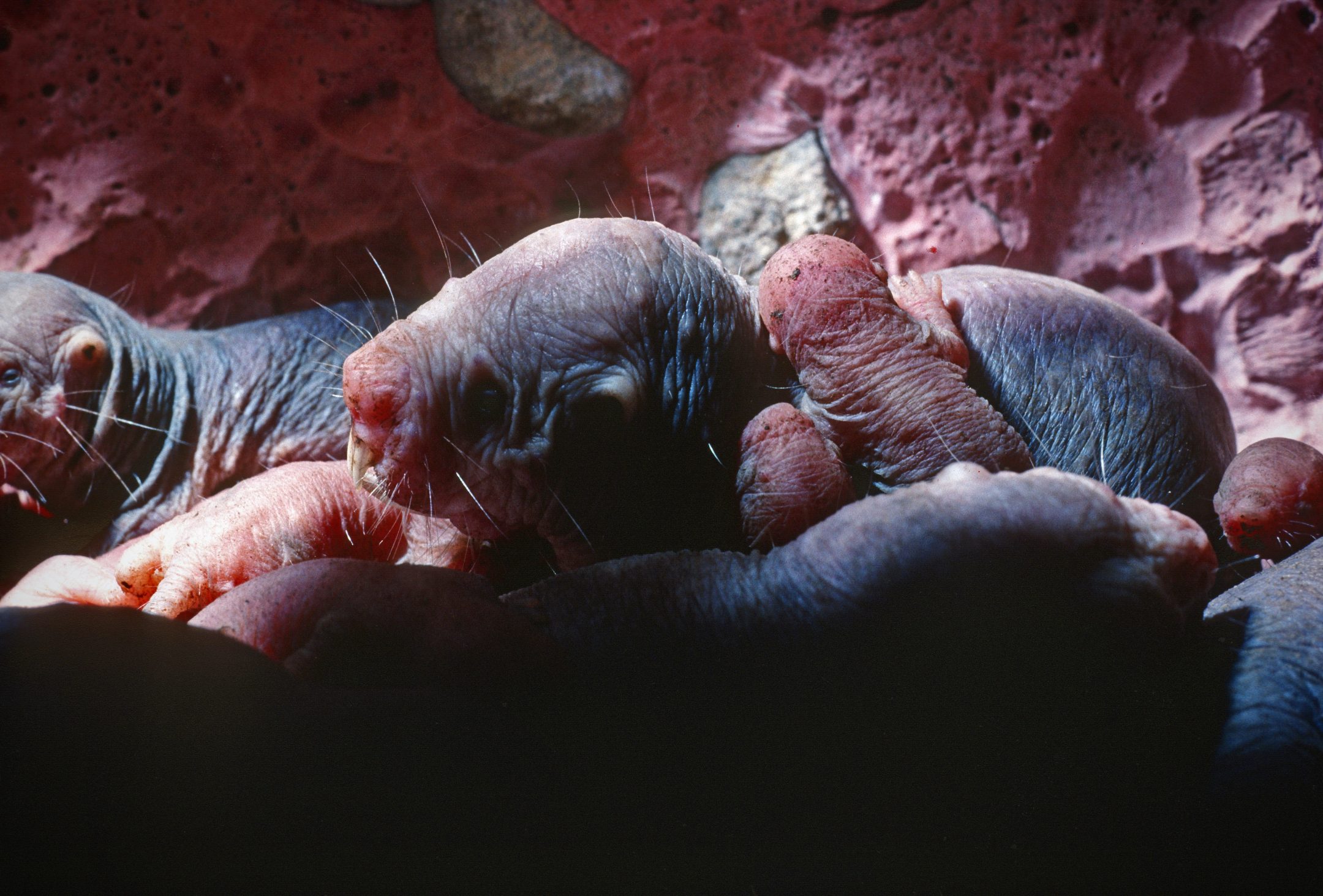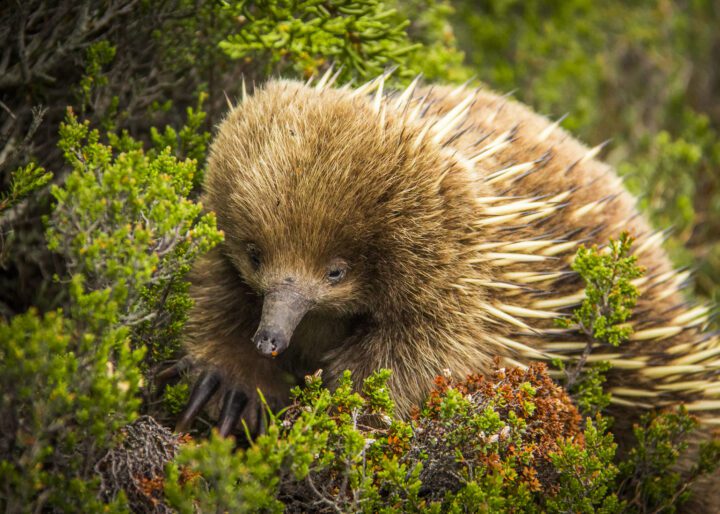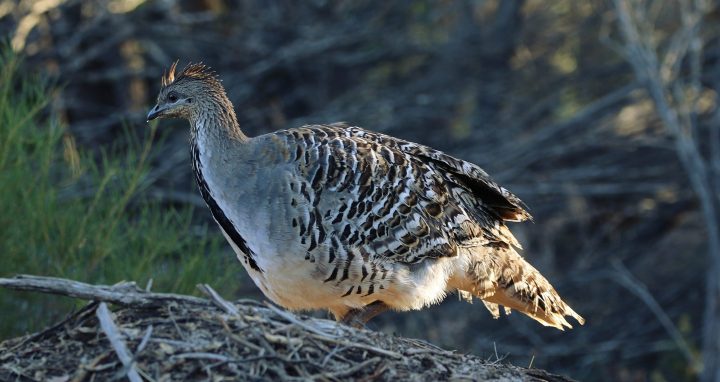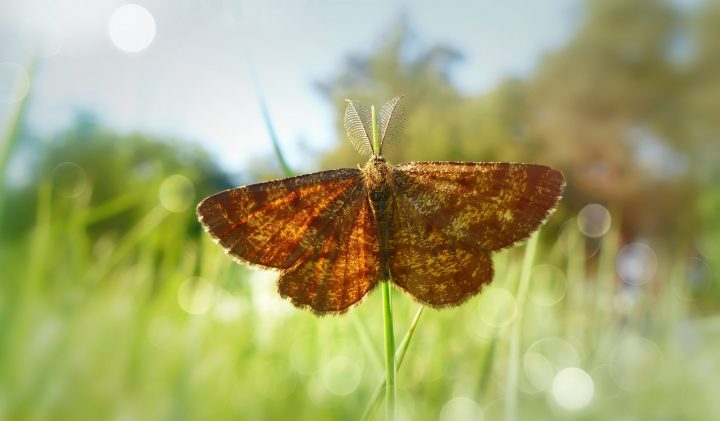Naked mole rat queens stay reproductive through long lives by maintaining the health of a large number of egg cells.
Part of a series focused on the work of the Natterson-Horowitz Lab.
Introduction
Somewhere out in the hard, red soil of the arid scrubland of the Horn of Africa, a small hole in the ground suddenly opens up, and soil begins flinging out from the aperture. This is the work of the naked mole rat (Heterocephalus glaber), found across parts of Somalia, Kenya and Ethiopia. Small and hairless, this unique, toothy mammal that is neither mole nor rat is busy expanding its underground warren. A series of tunnels that can extend for over two miles, naked mole rat colonies house dozens, even hundreds of individuals, all born from a single female. Remarkably, this foot-long queen can live for two decades or more, while a similarly-sized mammal would be expected to live only a fifth as long. Moreover, a naked mole rat queen will bear children throughout her entire protracted lifetime, up until her death. For comparison, a human female’s reproductive capacity dwindles as she ages until it finally ends, after she has lived only about half her expected lifespan.
The Strategy
Reproductive lifespan in female mammals largely depends on the size of their ovarian reserve––the number of healthy, immature egg cells at sexual maturity. This reserve generally varies positively with a mammal’s body size. Ovarian reserves house all of the germ cells (i.e., oocytes) theoretically available for fertilization throughout a female’s lifespan. In the naked mole rat, the ovarian reserve of a queen has over 20 times the number of eggs expected for the size of its body. This alone may explain the naked mole rat’s long, fertile life, although other factors, such as a reduction in the rate of germ cell attrition, the maintenance of oocyte quality, a highly efficient use of germ cells, or some other factor, may also contribute. Recent evidence also has emerged that naked mole rats keep producing new egg cells (oogenesis) during their lifetime, adding to their reserves, an unprecedented finding. In addition, non-breeding females can become breeding queens, their reproductive systems activated when a queen is removed from a colony.
The Potential
Worldwide, the mean age of human women giving birth for the first time has steadily increased. Meanwhile, the older women are during reproductive activities, the lower their chance of giving birth to healthy offspring, undergoing pregnancy without their own health complications, or giving birth at all. Species such as the naked mole rat, whose reproductive potential remains high throughout its entire lifetime, provide potential models for reproductive studies that could benefit human pregnancy outcomes, especially given trends in human maternal age.





